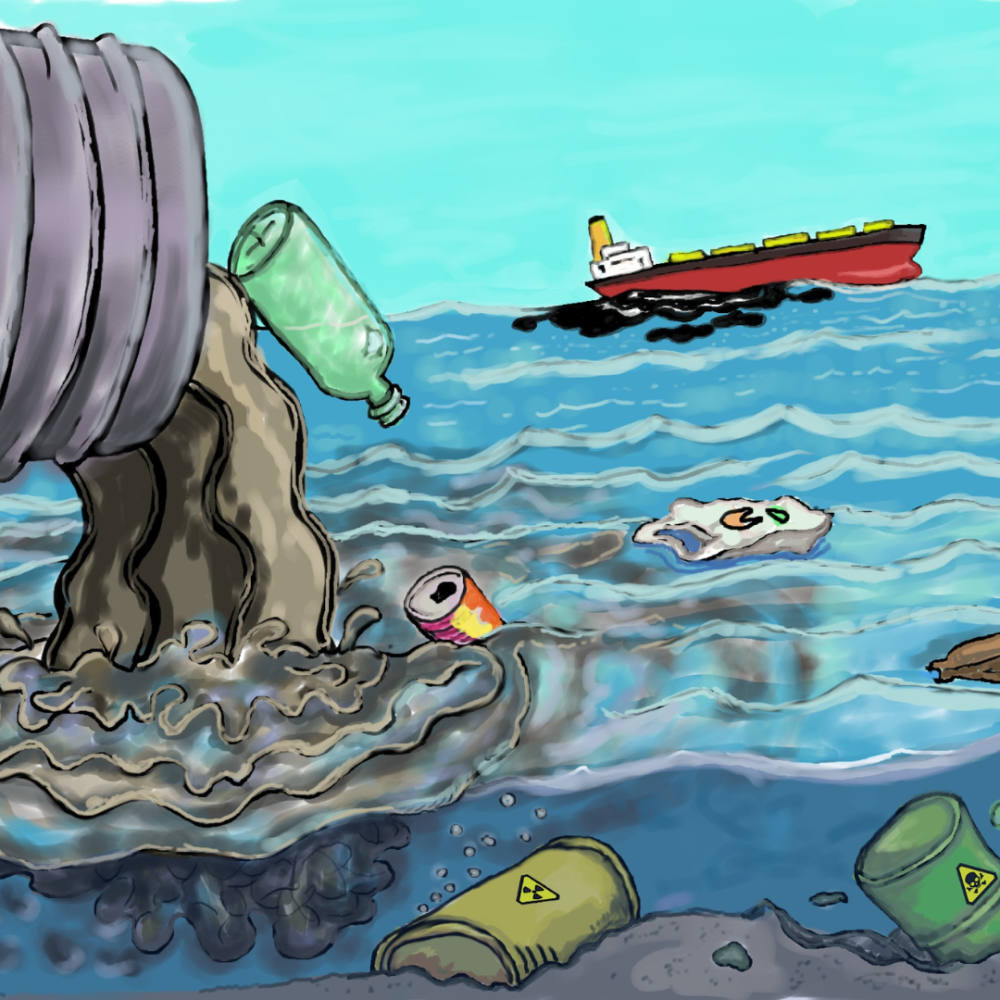
Two primary types of pollution are point source pollution and non-point source pollution. The City of Goleta’s Environmental Services Division would like to share information about the hazards of these pollutions and recommend strategies for reducing each type of pollution.
Point Source Pollution
Point source pollution refers to pollution that comes from an identifiable, specific source. Quite literally, we can “point” at the source of that pollution and deem it the cause of a contaminant being released into the environment.
Here’s an example– let’s say your neighbor Joe dumps decades-old leaded paint from his garage directly down his storm drain. A few weeks later, staff from the City of Goleta Environmental Services Division test San Pedro Creek for water contaminants, and they find that the creek has an abnormally high concentration of lead (Pb). No other local entities are using/discharging lead-containing products, as lead is an additive that has been banned in consumer products for decades. In this scenario, Joe’s garage would be the point source for lead pollution in San Pedro Creek.
Examples of potential point sources include wastewater treatment plants, solid waste facilities, specific farms/ranch operations, and/or a manufacturing facility or factory.
Non-Point Source Pollution
Non-point source pollution, or diffuse pollution, is the opposite of point source pollution. We can’t “point” at one entity (like Joe) as the sole cause of pollution. Instead, this pollution comes from unspecific sources around the community. Non-point source pollution can include stormwater runoff, runoff from highways and major thoroughfares, and runoff from land-based operations (agriculture, gardening, etc.). Non-point source pollution is much more difficult to remediate than point source pollution because often, we can’t identify exactly where the contaminant discharge is occurring, and how it is traveling through the surrounding environment. This type of pollution is typically more common than point source pollution.
A key example of a non-point source pollution is nitrogen (N) runoff. Nitrogen can come from a variety of sources in the community—agricultural fields and residential lawns (fertilizer and manure), parks and recreation areas (animal feces), and wastewater treatment plants (which don’t always pull all N out of water during treatment). This nitrogen can eventually be deposited in waterways, which can lead to impacts to wildlife and vegetation.
How can I reduce point source and non-point source pollution in the City of Goleta?
If you have a neighbor like Joe, or know of any point source polluter in the community, please don’t hesitate to report the incident to: EnvironmentalServices@CityOfGoleta.org
To learn more about sources of non-point source pollution, and strategies for mitigating non-point source pollution, please take a look at our brochure, entitled “The Ocean Begins on Your Street” in English and Spanish. If you have any additional questions, please don’t hesitate to email us at EnvironmentalServices@CityOfGoleta.org.


